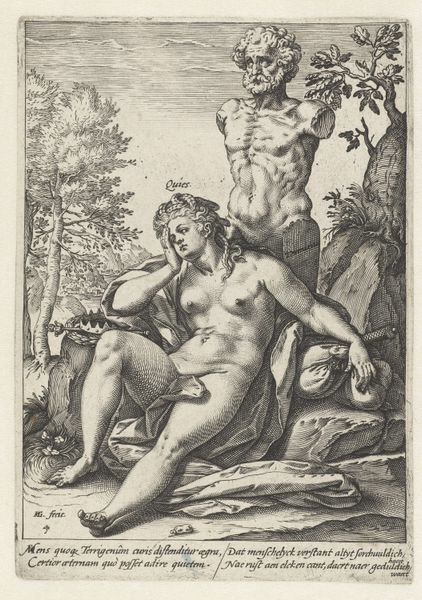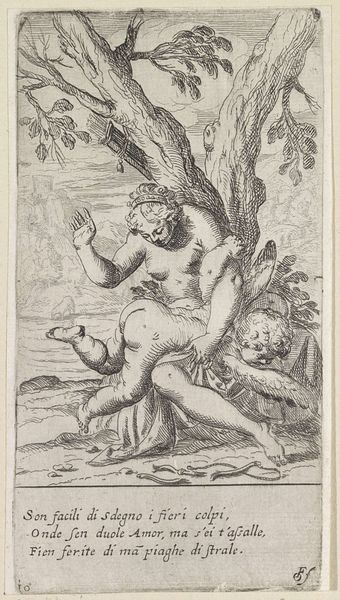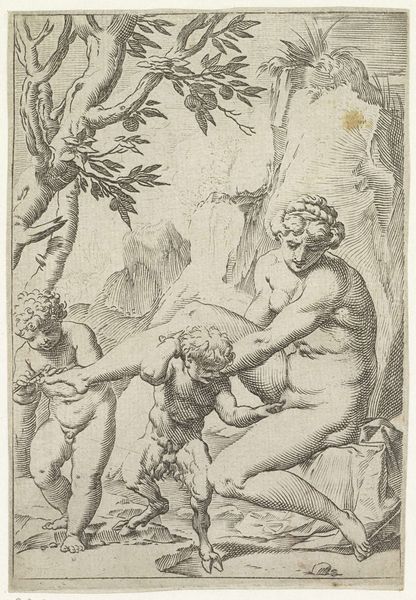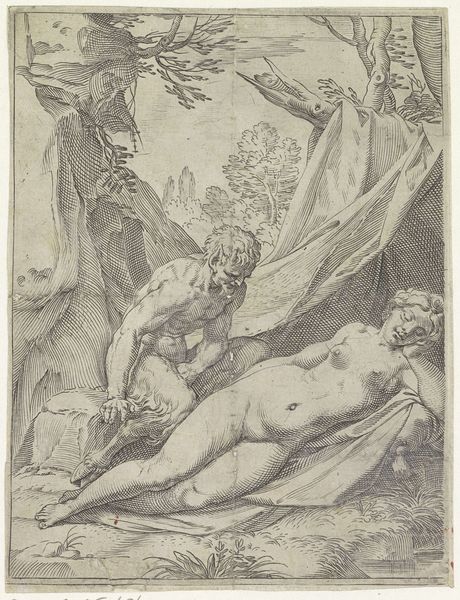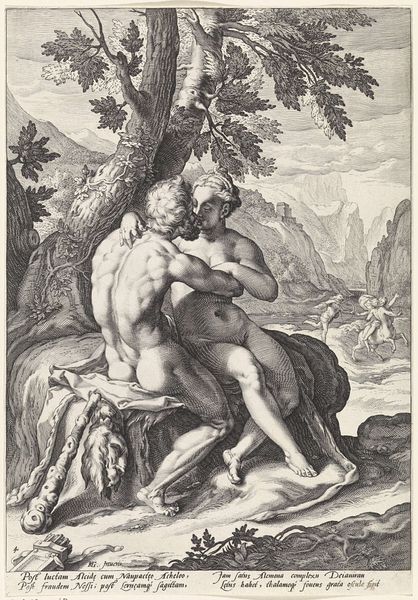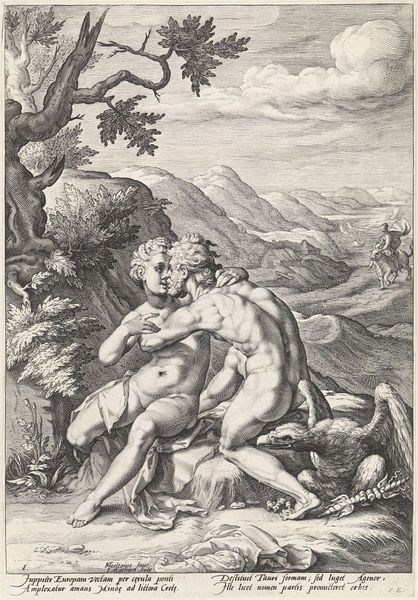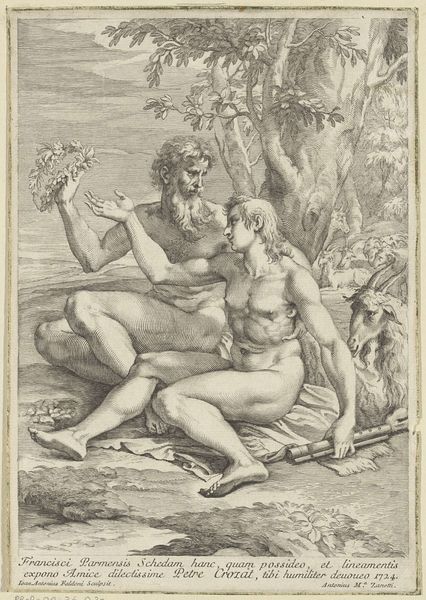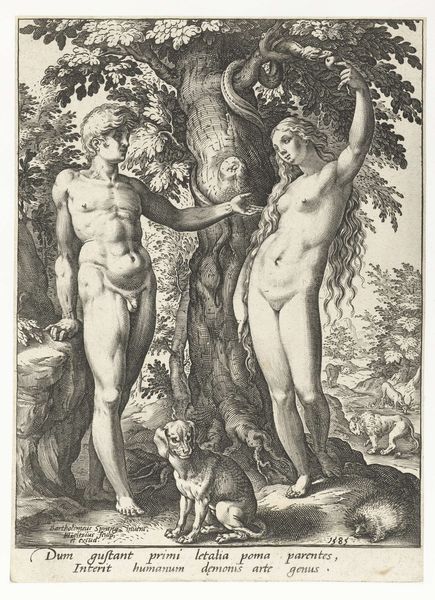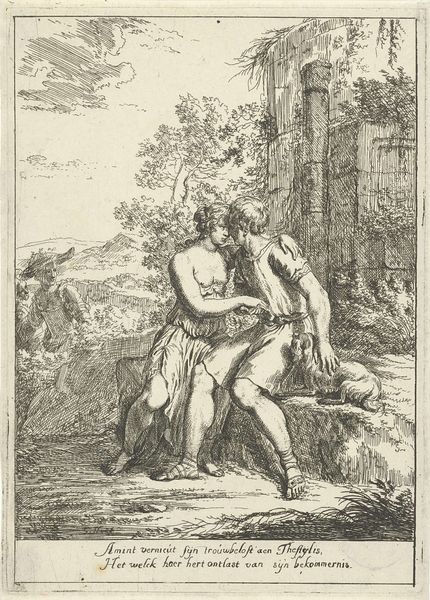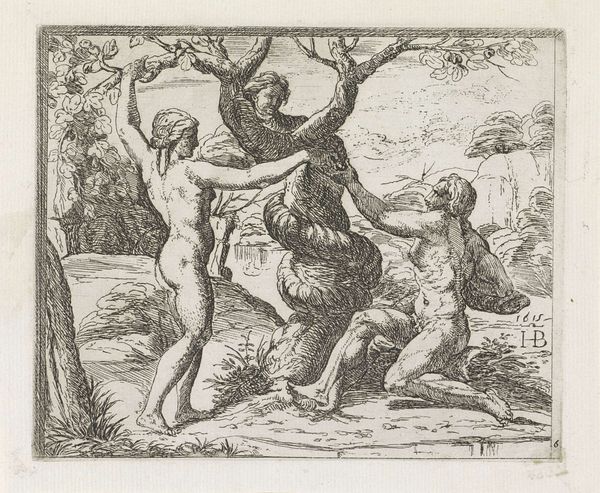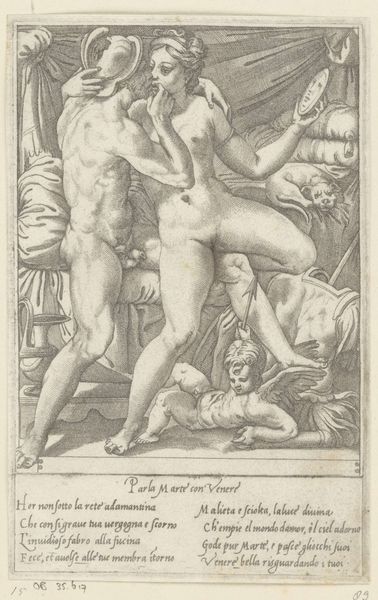
engraving
#
allegory
#
baroque
#
genre-painting
#
history-painting
#
nude
#
engraving
Dimensions: height 225 mm, width 169 mm
Copyright: Rijks Museum: Open Domain
Curator: Before us we have "Sleeping Venus Spied upon by Satyrs", an engraving created between 1599 and 1601 by Jacob Matham. Editor: It's... intense. All that exposed flesh in such a finely detailed, almost claustrophobic woodland scene. It's not just the nudity, it's the voyeuristic quality that makes me a bit uneasy. Curator: The artist uses Venus as a kind of a universal symbol of beauty and sensuality. That explains her vulnerable position while those satyrs peer at her, symbolizing primal desire. Also notice the little cupid. He's sleeping as well, as if innocent love has no power in this scene. Editor: It speaks to the socio-political tensions of the time. A nude goddess would represent freedom and artistic license while satyrs would remind viewers of uncontrolled earthly urges and baser elements of society. Was it intended as a celebration, or a cautionary tale about the gaze? Curator: Given Matham’s clear Baroque style, which often revels in drama and excess, it's less of a moral judgement and more of a visual spectacle. We must recognize how allegory shaped public reception and interpretation. Also notice how it connects to longer chains of history and genre. It wasn't the only take on this common theme! Editor: But whose gaze are we supposed to adopt? Do we identify with the leering satyrs, or do we see her from a more removed, almost clinical distance, turning her into a specimen of art history? It feels relevant, unfortunately, in today’s media saturated world. Curator: Consider too, that engravings like this would have circulated widely, copied and re-interpreted, impacting everything from decorative arts to popular conceptions of beauty and desire. These images create, and perpetuate cultural norms. Editor: You’re right. This simple-looking piece makes a strong statement about what and who is seen, who controls the narrative, and what echoes that image leaves. It goes beyond just the sum of lines on that printing plate. Curator: A potent reminder that art always works within society and human emotions. Editor: Absolutely, even centuries later, it evokes more than a few thoughts.
Comments
No comments
Be the first to comment and join the conversation on the ultimate creative platform.
